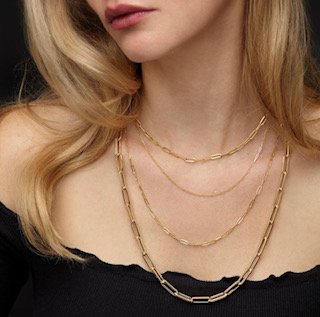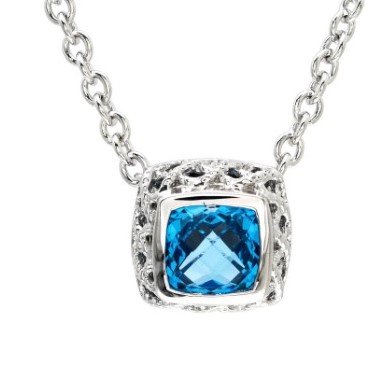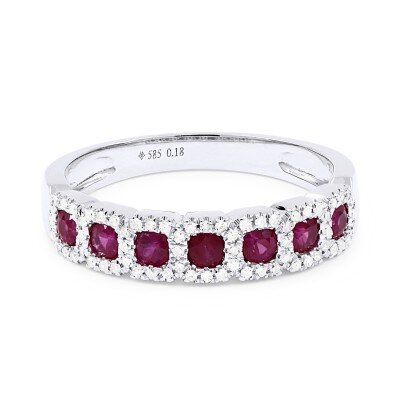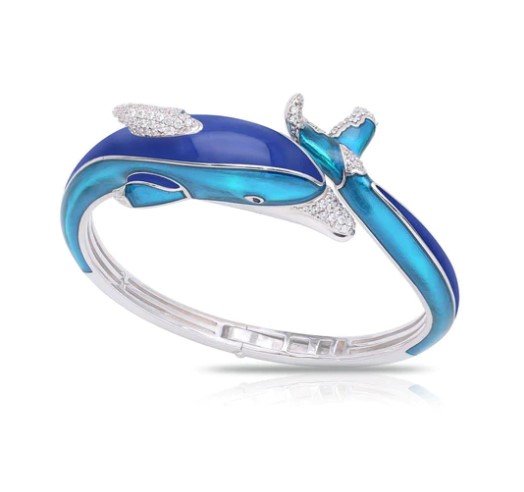Net-a-Porter Strikes Again! What a Cool Article...
/Copied from https://www.net-a-porter.com/en-gb/porter/article-e6e3d0a3a48f3afe/jewelry-watches/fine-jewelry/what-your-jewelry-says-about-you
WE ASK FASHION PSYCHOLOGISTS WHAT YOUR JEWELRY SAYS ABOUT YOU
The perfect piece of jewelry can provide you with a captivating way to express your personality or make a sartorial statement. Here, CHARLIE BOYD speaks to three leading fashion psychologists to learn how fine-jewelry collections can influence our mood, reflect our identity and empower us every day
14k Paperclip Chain Necklaces in varying sizes
“Fashion psychology is the application of psychological theories and principles to the fashion industry,” explains Shakaila Forbes-Bell, founder of Fashion is Psychology. Forbes-Bell has specialized in fashion psychology for the past five years, helping clients and companies gain a deeper relationship with their wardrobes. “Fashion psychology also provides insight into how our purchases shape us and enables us to navigate different elements of our identity,” she adds. Whether it be clothes, accessories, shoes or jewelry, the premise remains the same: studies have revealed a feedback loop between what we wear and our mood, confirming that how we dress can boost our morale, build confidence and even improve relaxation.
Sterling Silver & Blue Topaz Necklace
“The simple act of dressing up can influence how we feel,” agrees Dr. Dion Terrelonge, an accomplished applied psychologist, psychology-of-fashion researcher and commentator. “The process of dressing, in itself, can be enjoyable and generate feelings of pleasure, which in psychology we may describe as hedonic wellbeing,” she says. “What we choose to wear can make us feel more or less prepared for the day, more or less confident and, in some situations, as research has shown, more or less competent.”
Sterling Silver Bangle Bracelet
When it comes to jewelry, some of these attributes are heightened. “Like clothing, what makes a piece of jewelry most potent for the wearer is often the meaning it holds,” says Dr. Terrelonge. “I think jewelry can hold even more meaning, as it tends to be longer-lasting so has more time to accumulate stories,” agrees Professor Carolyn Mair, who developed the Psychology of Fashion degree courses at London College of Fashion, is the author of The Psychology of Fashion, and consults with H&M Group as the company’s behavioral psychologist. “Special items of clothing can do this but, in the end, clothing may fall apart unless it’s handled extremely carefully or kept in a museum, whereas jewelry can be worn daily,” she explains.
Lola Charms
How, then, do we harness the psychological power of fine jewelry? “The jewelry we wear can be a strong signifier of many things beyond our personal tastes,” says Forbes-Bell. “Jewelry can speak to an individual’s wealth, social status, culture and reveal more about their self-identity – therefore, people should definitely consider the meaning behind their jewelry choices, as it’s another way to allow them to embrace their most authentic self.”
Color, for example, is a powerful tool. “We all have personal associations with colors that remind us of a particular time, place or person; when we wear those colors, we embody the traits we associate with them,” she says. “It’s also important to acknowledge the cultural associations of certain colors. For example, in many western cultures, red is associated with romance, and studies have shown that wearing red can increase attractiveness ratings.” Mair explains that red is the most studied color in terms of psychology because its wavelength excites us biologically, which may well explain the eye-catching allure of crimson-colored jewels, including rubies, garnets and tourmalines.
Ruby & Diamond Ring
Another intrinsic quality of jewelry is its magpie effect – by wearing intensely scintillating gems, we can enhance our overall visual appeal. “Studies have shown that people prefer objects that are displayed on a shiny surface than those placed on a matte one,” says Forbes-Bell. “Some evolutionary psychologists believe that our attraction to glossy or shiny objects stems from our innate need to seek out water as a valuable resource,” she explains. “Historically, jewelry would also have been most often worn by those of nobility or notability; those who commanded attention or sought to draw attention to their status and wealth,” adds Dr. Terrelonge.
Rose Gold, Morganite & Diamond Bracelet
A fun-loving spirit can also be signified by our jewelry choices. “We are drawn to jewelry because of its lack of function. It is not utilitarian and is rarely necessary, like clothing, so in this way, it is special – it is fun and, primarily, aesthetic,” says Dr. Terrelonge. “Again, this links back to hedonic wellbeing, otherwise known as the feel-good factor. Jewelry provides a little act of rebellion or escape from the practicality of day-to-day life and adds beauty for beauty’s sake – something humans respond well to,” she explains.
Dauphin Bracelet by Belle etoile
Perhaps the most powerful influence on our psyche, however, is the symbolic value of fine jewels. “The more I became aware of the powerful symbolism of jewelry through my research, the deeper my relationship grew with my own collection,” says Forbes-Bell. A pair of gold hoop earrings made in Trinidad, inherited from her mother, helps to remind Forbes-Bell of her culture and strong familial bonds. Dr. Terrelonge also acknowledges this grounding, centering force: “Jewelry, in terms of holding and triggering emotional memories, can be very powerful,” she muses. “It can remind us of who we are, help us to feel connected, loved and part of something bigger than ourselves.”








